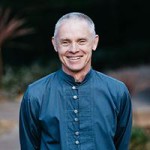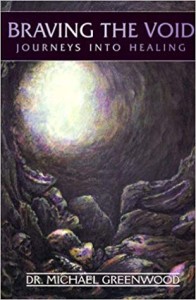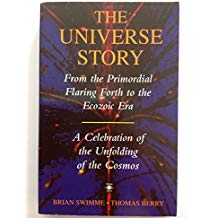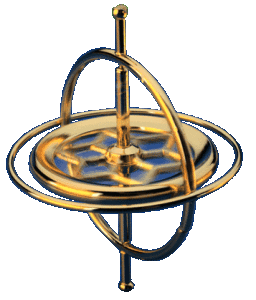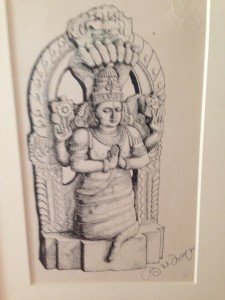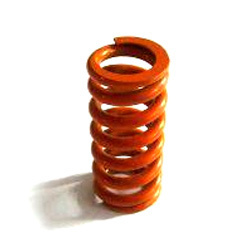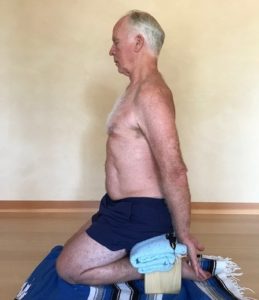In the previous post I covered various perspectives on the often negative inner dialogue running on in morphing loops through the human psyche. Amazingly enough, in my almost 50 years of spiritual inquiry, I had never encountered the Buddhist notion of the skandhas, which clearly describe the emergence and development of the egoic mental states and structures. Until now! Timing is everything, of course.
 The revelation comes from the enlightened writing of Reggie Ray in his new book, “Pure Awareness”. Reggie comes from the Vajrayana tradition of Buddhism as taught by Chogyam Trungpa, and what I love about Reggie’s approach is that it is all in the body, or soma. Meditation as an embodied spiritual practice is radical, as most traditions still teach it ‘top-down’, ie , use the mind/psyche to calm the body/soma. Reggie’s Vajrayana approach is to: go to the core of the soma to discover the origins of the egoic structures: see them from the body’s perspective; notice the suffering and unhappiness they unconsciously manifest; and transform them into healthy expressions of human possibility.
The revelation comes from the enlightened writing of Reggie Ray in his new book, “Pure Awareness”. Reggie comes from the Vajrayana tradition of Buddhism as taught by Chogyam Trungpa, and what I love about Reggie’s approach is that it is all in the body, or soma. Meditation as an embodied spiritual practice is radical, as most traditions still teach it ‘top-down’, ie , use the mind/psyche to calm the body/soma. Reggie’s Vajrayana approach is to: go to the core of the soma to discover the origins of the egoic structures: see them from the body’s perspective; notice the suffering and unhappiness they unconsciously manifest; and transform them into healthy expressions of human possibility.
What is most fascinating is that this was my primary take-home message in the ‘Embodying the Embryological Foundations of Movement” workshop I attended with Bonnie Bainbridge Cohen last month. A brief summary includes: 1. that the earliest stages of embryological development take place before the brain emerges; 2. the foundational intelligence of the body is ‘original (infinite) space plus movement; and 3. the body can ‘know itself’ independent of any act of mind.
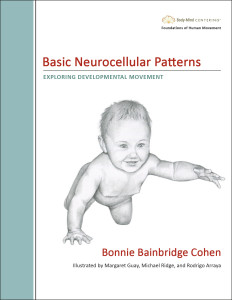 In Bonnie’s ‘hot off the presses’ book, “Basic Neurocellular Patterns” she describes what she calls ‘The Embodiment Process’, which is also how she was presenting the material during the workshop.
In Bonnie’s ‘hot off the presses’ book, “Basic Neurocellular Patterns” she describes what she calls ‘The Embodiment Process’, which is also how she was presenting the material during the workshop.
” The process of embodiment is a being process, not a doing process; it is an awareness process in which the guide and witness dissolve into cellular consciousness.” (I’ll link this to the skandhas shortly!!) She list three processes leading to embodiment.
“1. Visualization: the process by which the brain imagines (visualizes) aspects of the body and informs the body that it (the body) exists. (We had anatomical drawings of the various stages of embryological development that we color coded. (Like being in 2nd grade again!)
2. Somatization: the process by which the kinesthetic (movement) and tactile (touch) sensory systems inform the body that it (the body) exists. In this process there is a witness – an inner awareness of the process. (Many hours exploring: solo, with a partner/guide, or in a larger group, using any means you desired. Yoga- centric ones used postures and yoga flow primarily, dancers moved, and everyone received hands on support whenever needed. (There were 30 assistants!)
3. Embodiment: the awareness of the cells themselves. It is a direct experience. There are no intermediate steps or translations. There is no guide. There is no witness. There is the fully known consciousness of the experienced moment initiated from the cells themselves. In this instance, the brain is the last to know. There is a complete knowing and peaceful comprehension. Out of this embodiment process emerges feeling, thinking, witnessing and understanding. The source of this process is love.”
This last paragraph is a good a description of fully embodied, non-dual, ‘Pure Awareness’ as you will ever see. And it is the ‘goal’, if we can call it that, of the Pure Awareness meditation process as described by Reggie in his book. This convergence of visionary beings in the present is a tremendous gift to us.
So what are the skandhas? Reggie uses the Greek word ‘soma‘, so I will use the Greek word psyche to describe the neuro-biological processes and dynamic structures that we might call thought, feeling and emotion that combine to give us a self sense, (the ahamkara is said to do this in Yoga Philosophy), and there are many more attributes we can find. (Modern Western Psychology calls these components of the psyche “parts” (Internal Family Systems) or “voices” (Voice Dialogue).
From an evolutionary perspective, ‘soma’ emerged from the depths of timeless mystery through the evolution our planet, Mother Earth, 4 billion years ago with the first primitive single cellular organisms. This soma, as a cellular intelligence continued to evolve over the next 4 billion years, and, still embedded in mystery, continues to evolve moment to moment, here and now. What we are calling psyche, in its human form, emerged within the soma somewhere within the last 2 million years or so, and continues its own unfolding into the present.
Somewhere along the line of evolution, the psyche developed the possibility of forgetting its origins in Ultimate Mystery and the primal cellular ‘soma’. When this forgetting happens, the psyche begins to create a separate ‘me’ and then feels an existential terror at being a tiny ‘me’ in a world where ‘dissolving into infinite mystery’ means the end of ‘me’. A bit of a Catch-22 here. In other terms, this is the eviction from the Garden of Eden.
This recoiling in horror at the vision of Ultimate Mystery is actually the first skandha, known as the ignorance of the nature of form, or just form. The ‘Truth’ of form is that ‘forms’ (Prakriti in the Yoga Sutras) are continually arising from and dissolving into ‘Emptiness’. The psyche, itself a form, being horrified by its own impermanence, starts to create all sorts of problems. My own personal experience with PTSD and panic attacks, in retrospect, was this first skandha in action. Yes, there was stored trauma in the body and psyche, but ultimately the resolution was to let the body heal itself by staying present. For the Yoga Sutras students, this is also the first klesha, avidya, as described in II-3 to II-5. Also, Arjuna, in chapter 11 of the Bhagavad Gita, gets a very abrupt, full on introduction to this skandha. Some aspects are shattering, but fortunately he has Krishna as his guide and Krishna helps him return to a state of inner peace before his skandhas get too scrambled.
Of course the psyche is highly unlikely to say to itself “Oh, my bad. We’re all cool with impermanence, emptiness and unbounded mystery. Lets ‘let-go’ and enjoy the ride.” It almost always desperately looks for something to grasp onto for security, something tangible to feel, so it (the psyche) can be reassured of its own ‘solidity. It begins to divide the infinite world of forms into ‘things I absolutely need’ and ‘things I absolutely need to avoid or get rid of. This is the second skandha, known as vedana, or feeling”, where the pain of craving is born. The ego starts to gain in solidity. In the Yoga Sutras, II-7 and II-8, these are described as two more kleshas.
The third skandha, perception/impulse, is the playing field of spiritual practice. Once craving arises the psyche begins to develop strategies to deal with this craving by manipulating its personal world. The three primary strategies are passion, aggression and indifference. Passion is the energy that drives us to acquire what we desire; aggression provides the energy to fight off what we are afraid of: indifference allow us to numb any other unpleasant or unresolvable feelings. In this skandha, our life energies are conscripted to pursue the endless cycle of passion and aggression, or the numbness of indifference leads to depression. Our primary self-sense is that we are ‘lacking’ or ‘wanting’ and there is never a resolution. As we will see later, impulse is our entry point into the skandhas and the one place we can begin to make changes.
The psyche, its its own clever way, needs to now validate all this impulsive 3rd skandha activity, so it begins to categorize, label and organize its behavior and observations. The fourth skandha conceptualizes and names, and is thus known as the skandha of ‘Intellect or Concept’. This leads to memories and habits, or what are called samskaras in Sanskrit, and karma. Think of samskaras as the immediate response to an impulse, and karma as your full history of all responses. Thus the full personality structure or ego is almost complete. (See Sutra I-43 where Patanjali describes the healing of this skandha.)
Finally, we need something to integrate impulse and intellect and the Sanskrit word given to the fifth skandha is Vijnana, or Consciousness. The ego is now a fully valid, conscious entity. Chogyam Trungpa, Reggie Ray’s teacher describes this skandha eloquently:
 “Consciousness consists of emotions and irregular thought patterns, all of which taken together form the different fantasy worlds with which we occupy ourselves. These fantasy worlds are referred to in the scriptures as the “six realms”. The emotions are the highlights of ego, the generals of ego’s army; subconscious thought, day-dreams and other thoughts connect one highlight to another. So thoughts form ego’s army and are constantly in motion, constantly busy. Our thoughts are neurotic in the sense that they irregular, changing direction all the time and overlapping one another. We continually jump from one thought to the next, from spiritual thoughts to sexual fantasies to money matters to domestic thoughts and so on. The whole development of the five skandhas–ignorance/form, feeling, impulse/perception, concept and consciousness–is an attempt on our part to shield ourselves from the truth of our insubstantiality.”
“Consciousness consists of emotions and irregular thought patterns, all of which taken together form the different fantasy worlds with which we occupy ourselves. These fantasy worlds are referred to in the scriptures as the “six realms”. The emotions are the highlights of ego, the generals of ego’s army; subconscious thought, day-dreams and other thoughts connect one highlight to another. So thoughts form ego’s army and are constantly in motion, constantly busy. Our thoughts are neurotic in the sense that they irregular, changing direction all the time and overlapping one another. We continually jump from one thought to the next, from spiritual thoughts to sexual fantasies to money matters to domestic thoughts and so on. The whole development of the five skandhas–ignorance/form, feeling, impulse/perception, concept and consciousness–is an attempt on our part to shield ourselves from the truth of our insubstantiality.”
The Five Skandhas:
(Ignorance of the true nature of) Form – Feeling – Impulse – Intellect – Conscious
In our somatic exploration/meditation practice, because we have trained our attention to stay in the immediate somatic experience (dharana, dhyana, samadhi, or Samyama) we are able to feel the level of impulse, skandha 3. Because the body, the soma, is both fully present and effortlessly embedded in Ultimate Mystery, totally comfortable with impermanence, our capacity to stay here gives us a non-grasping anchor resisting the winds of impulse. When, as Bonnie describes, the body becomes ‘conscious’, or awake, the infinite space is just there, present, luminous and alive. This is ‘embodiment‘. When an impulse arises, we can choose not to respond and just stay present in the soma. This, by the way, is the meaning of Patanjali’s Yoga Sutra I-2 and I-3; yogash citta vritti nirodha; tada drashtuh svarupe avasthanam. “Yoga is not responding to impulse, but remaining stably in the infinite (illumination reflected in the soma.) Or “The Drashtuh Abides”.
What Bonnie taught me this past month was to stay embodied and be in the world at the same time. That was the primary lesson for me, and it took her catching me in the exact moment of losing the soma to really get it. We were exploring some new inner spaces and feelings while staying aware of presence and the outer world simultaneously and I got distracted by some new exciting revelation. She was tracking me and immediately snapped her fingers. At first I thought she was signaling the class, but when I looked at her, I realized that she was calling me back into the soma/infinite that she was holding effortlessly, while being present to all, inner and outer. The whole workshop was captured in that moment. Sustaining this is not easy, but that is why we practice. (see Sutras I-12 – I-16). This is the transformation of the skandhas.
This practice goes on forever, of course, as impulses arise from all over the field of human consciousness, wanting to take us back careening into ignorance and delusion. Especially as we engage dynamically with the world. It is one thing to be in a monastery on a remote mountain top where the outer world is no longer present. You still have your own inner world to deal with, back back on the street, back in society, many many more triggers are activated. Less time and more need to practice. A bit ironic.
By the Way, in Pure Awakening, Reggie has some deep insights into the relationship between technology/social media, the near total disembodiedness of much of our youth, and the sheer terror they feel at actually having to face their own unpleasant feelings. Without the support of the body/soma, the option is to try to avoid anything uncomfortable and blame someone/anyone else for causing this. Big skandha problems here. The ‘adults’ in Congress and the business world don’t seem to be much better at dealing with reality than the youth, so it makes our own urgency to build a strong embodied field of love and compassion that much stronger. The skandhas can be transformed. We need their healthy expression to fully function, as individuals, but also as a society. Our culture has its own skandhas.
So how can we train ourselves to abide in the stillness while simultaneously being engaged in the world? Got to your mat and find out.
Choose a pose: (easiest in a sitting posture of course to go all the way with this.) 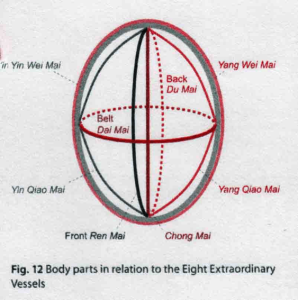
Find flowing connection to yin/ground/weight and yang/lightness/sky.
Find your center channel, (chong mai) feel it open at the crown into heaven and root into earth;
Relax and open your heart to find center.
Connect root and crown with small orbit meditation, completing the circle in both directions to open and relax the larger energy field that connects and integrates inner and outer worlds, yin (cv or ren mai) and yang (gv or du mai).
Add the girdle vessel (dai mai) for horizontal stability.
 Let your breath further awaken the lower dantien, broadening and spreading your base to deepen the rooting in the soma, away from the psyche.
Let your breath further awaken the lower dantien, broadening and spreading your base to deepen the rooting in the soma, away from the psyche.
Open even more deeply to Mother Earth.
Let your breath fill the inner space effortlessly on the in breath and let it dissolve into emptiness on the out breath.
In that dissolving feel the infinite space that receives the breath and illumines the body. Rest in that luminous emptiness for a (second .. few seconds– minute…)
and then return to any of the steps above and begin again.
When you find yourself lost, retrace your way back through the skandhas. Impulse – intellect – ego story. Drop the story. Bring your attention back to the soma as a felt sense of weight, breath, volume, whatever works for you. When you feel the impulse, resist. Practice nirodha. Open back into the infinite space and the aliveness of the soma. Over time, the habits/impulses begin to lose energy because we are no longer feeding them with our attention. Our fears begin to subside as we feel the fullness that the soma provides. Our concepts and conscious choices begin to reflect a deepening sense of well being that is actually our ‘True Nature.” What a surprise! Continue for the rest of your life in this body. Be a radiant presence embracing your own very real and very human failings.


